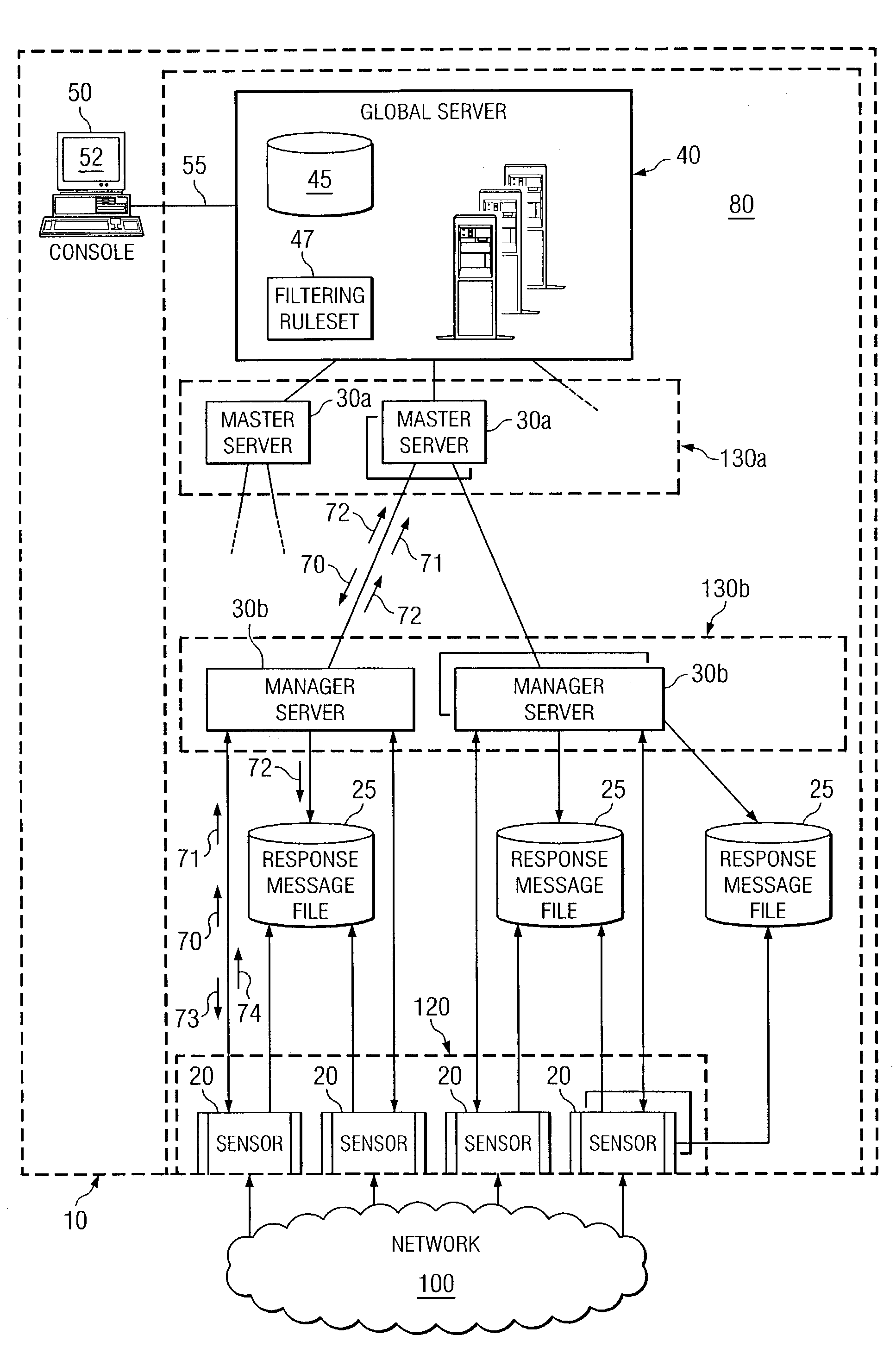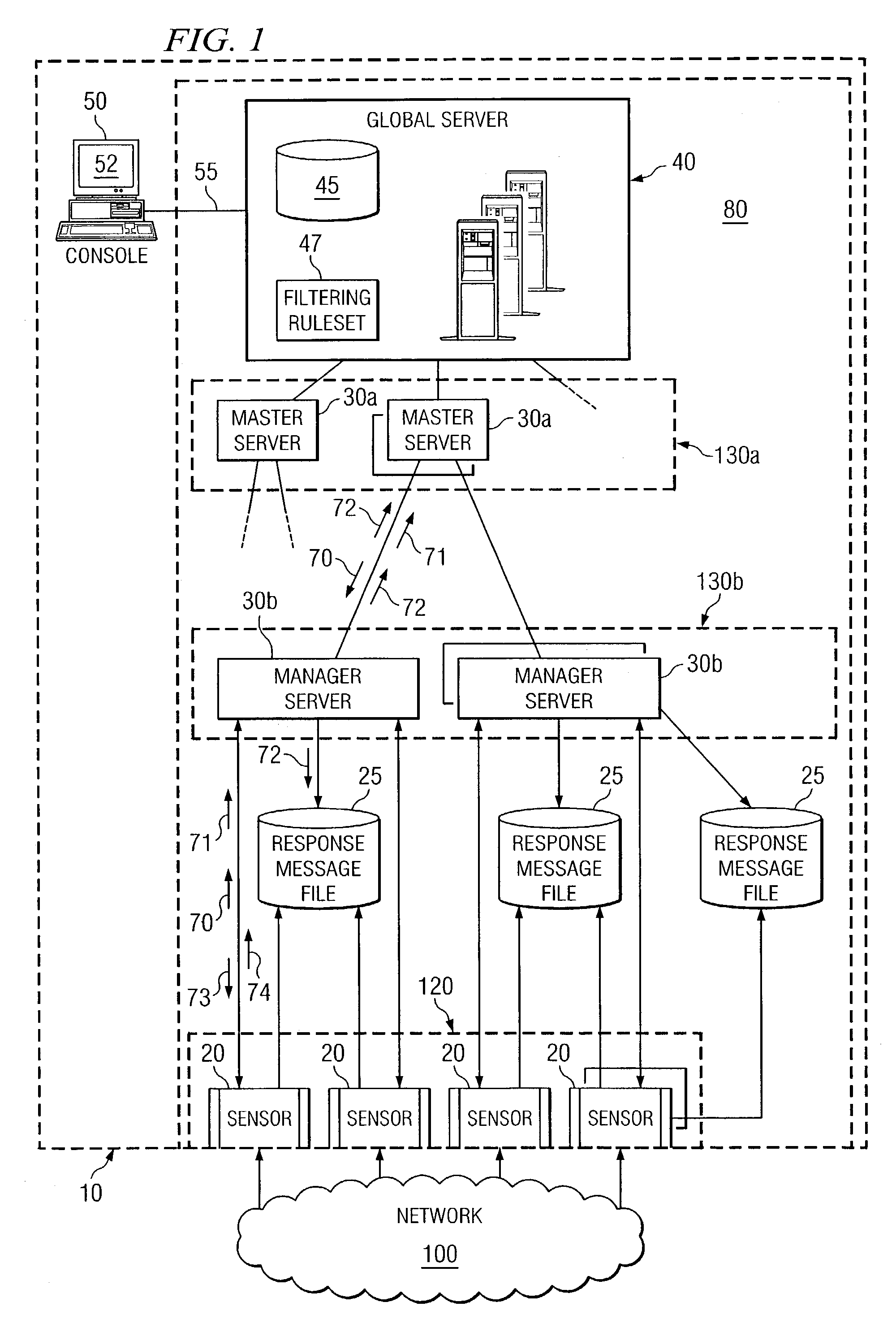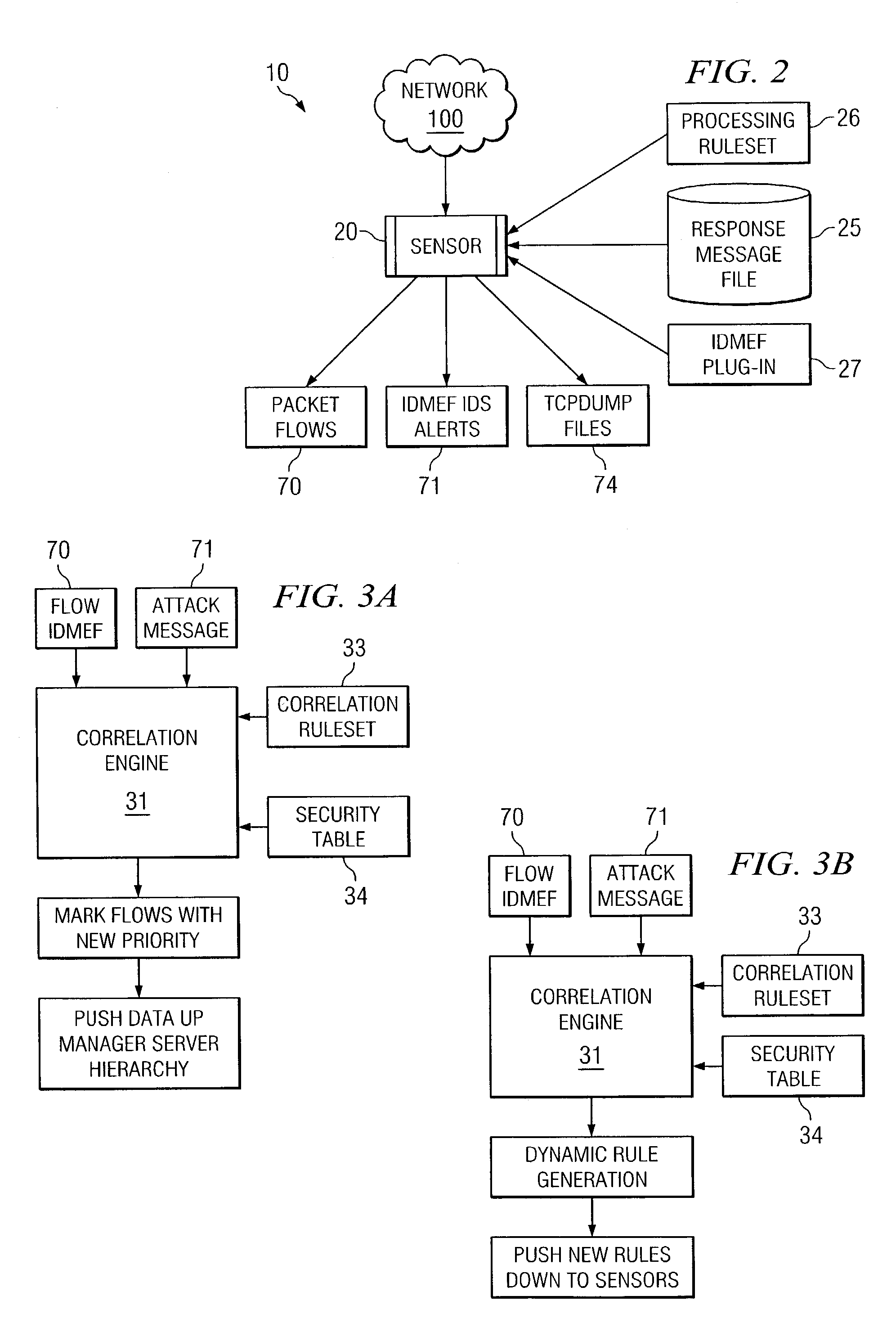Vertically extensible intrusion detection system and method
a technology of intrusion detection and extensibility, applied in the field of intrusion detection systems, can solve the problems of inability to easily scale up and down the intrusion detection system (idss), lack of scalability, and enterprise need to hire additional expensive analysts
- Summary
- Abstract
- Description
- Claims
- Application Information
AI Technical Summary
Benefits of technology
Problems solved by technology
Method used
Image
Examples
Embodiment Construction
[0020]FIG. 1 illustrates a portion of a vertically extensible intrusion detection system 10 distributed across an enterprise system according to various embodiments of the present invention. The “enterprise” may comprise any business, government, organization, or other large entity that has multiple network channels or ports to an external network 100. For example, a business enterprise may include four ports for external network communications including email, internet, and dialup. In this example, intrusion detection system 10 monitors network communications on the three external ports and attempts to detect, locate, or block an attack on the business. An “attack” may be any malicious, destructive, or suspicious activity communicated from a source external to the portion of the enterprise protected by system 10. Attacks may include viruses, Trojan horses, worms, or any other piece of code or data that represents at least a portion of an unwanted attempt to access the protected por...
PUM
 Login to View More
Login to View More Abstract
Description
Claims
Application Information
 Login to View More
Login to View More - R&D
- Intellectual Property
- Life Sciences
- Materials
- Tech Scout
- Unparalleled Data Quality
- Higher Quality Content
- 60% Fewer Hallucinations
Browse by: Latest US Patents, China's latest patents, Technical Efficacy Thesaurus, Application Domain, Technology Topic, Popular Technical Reports.
© 2025 PatSnap. All rights reserved.Legal|Privacy policy|Modern Slavery Act Transparency Statement|Sitemap|About US| Contact US: help@patsnap.com



